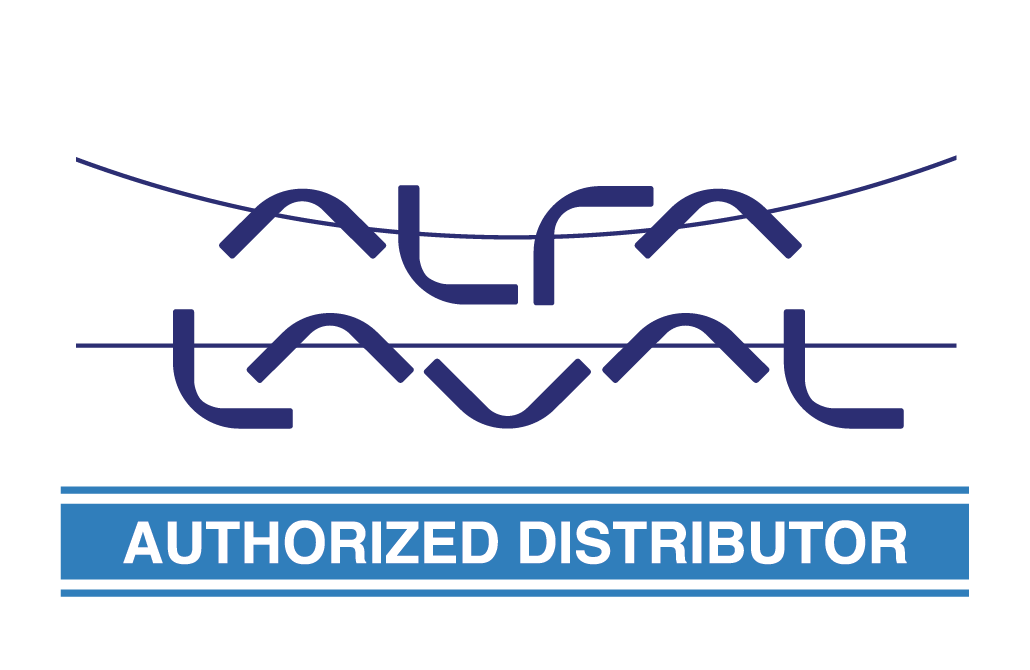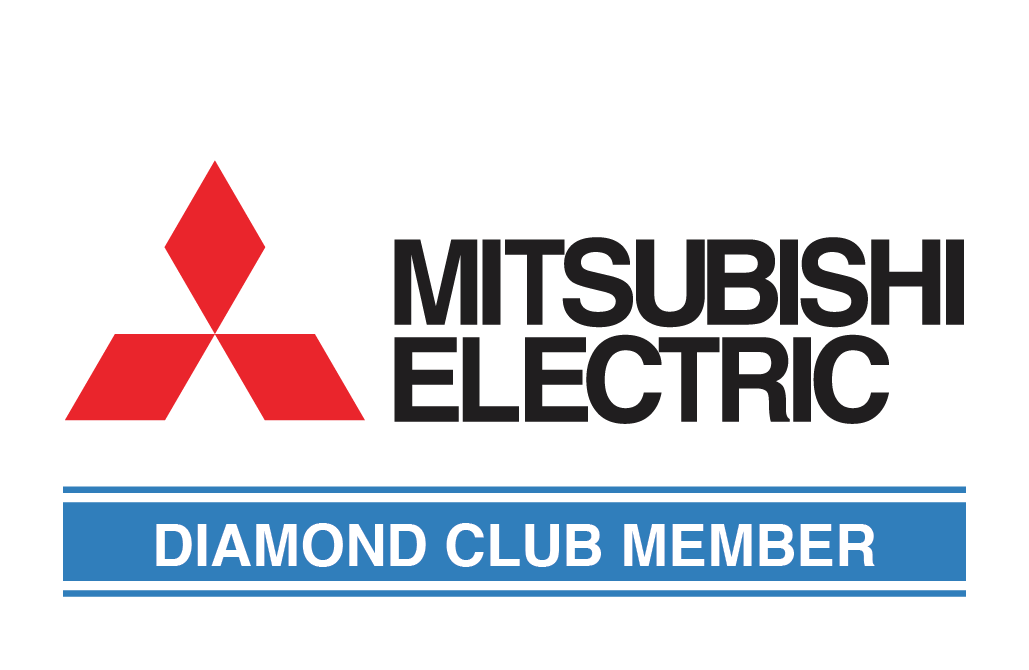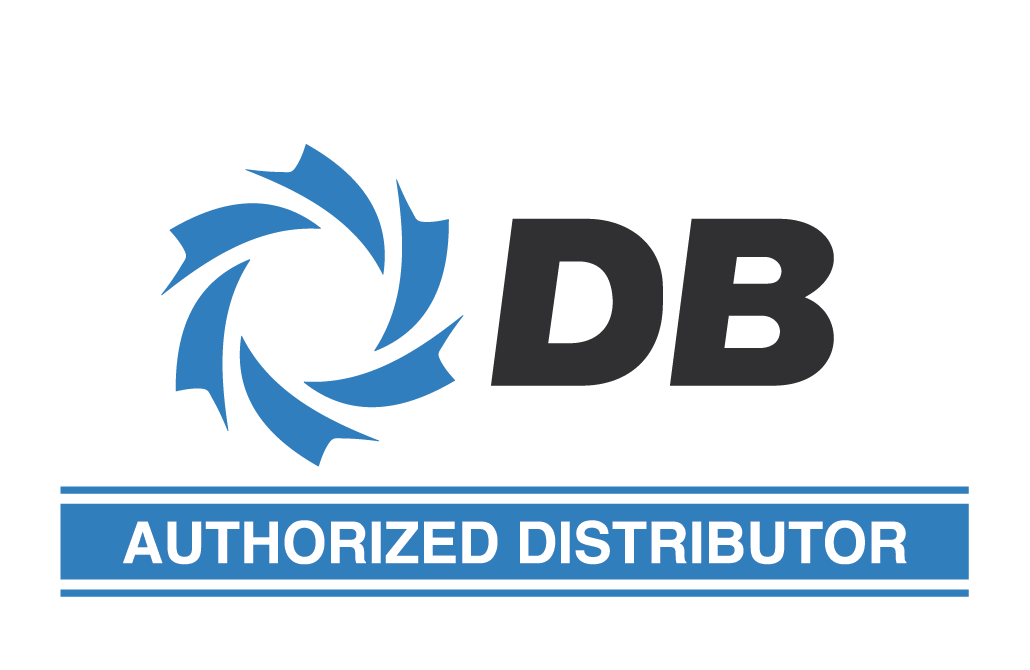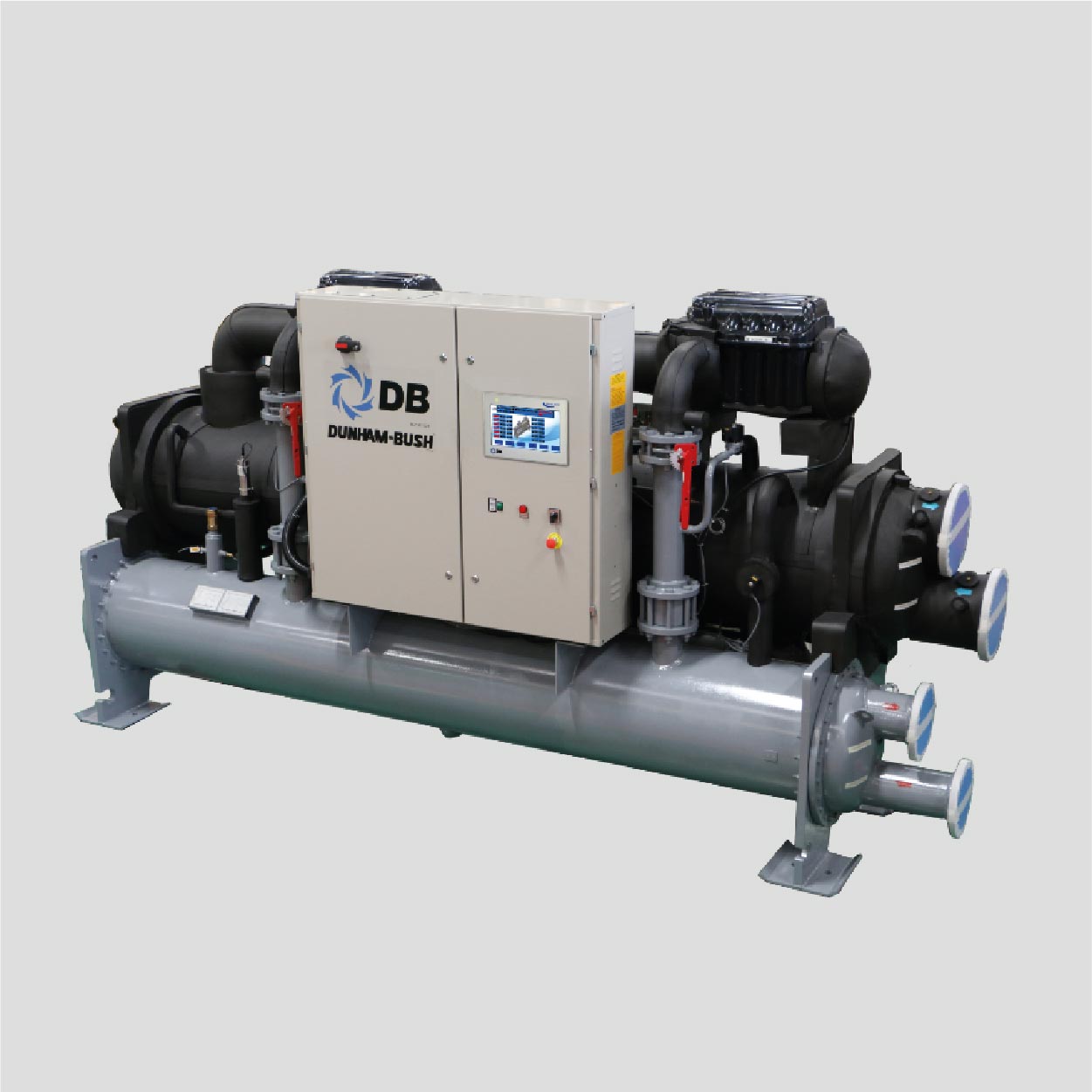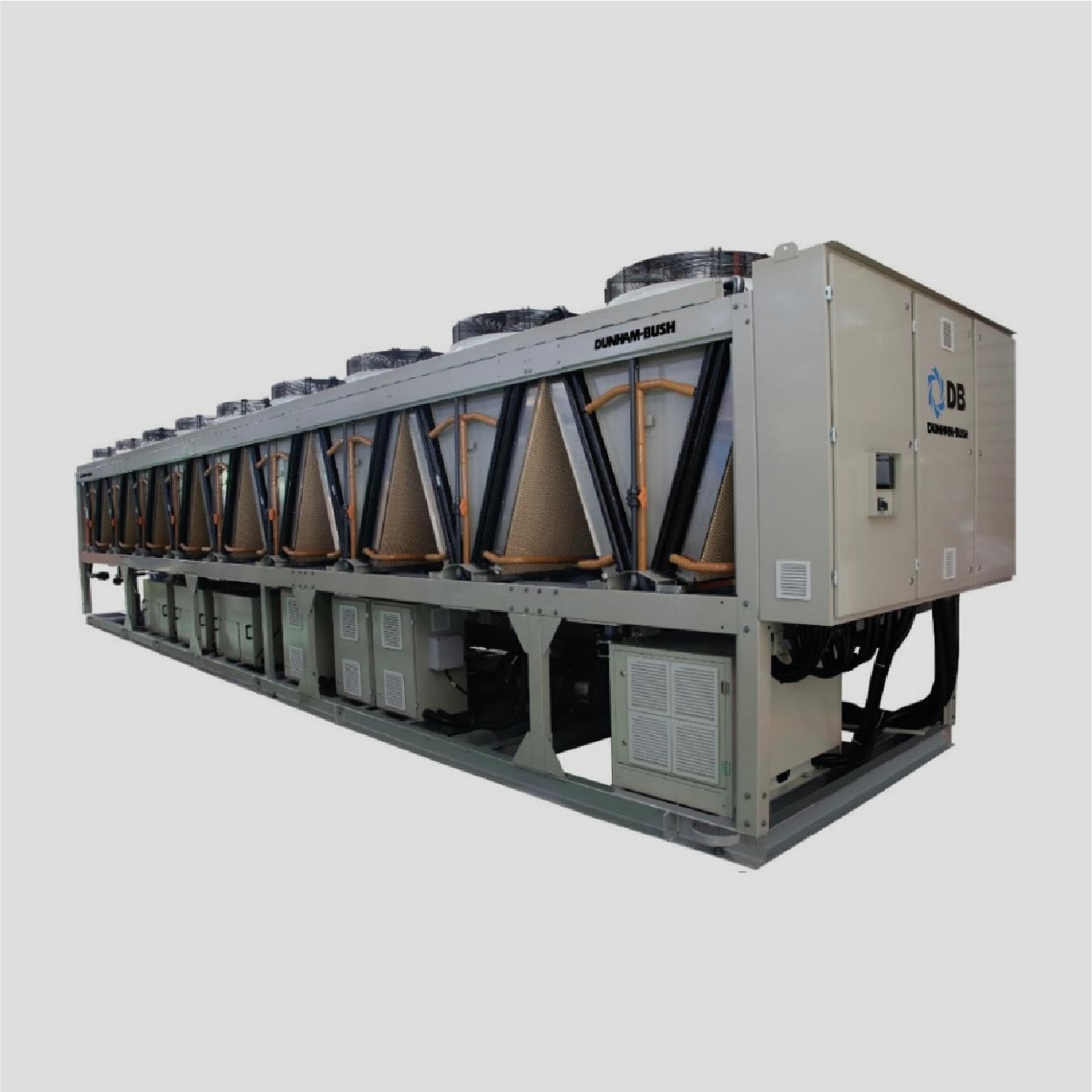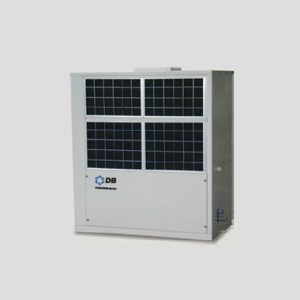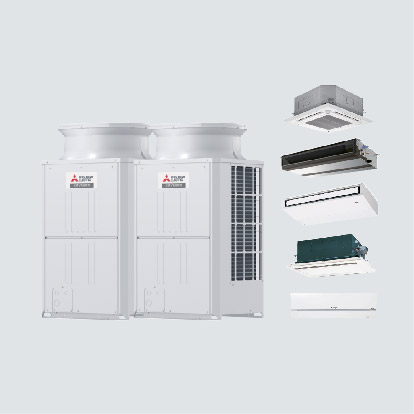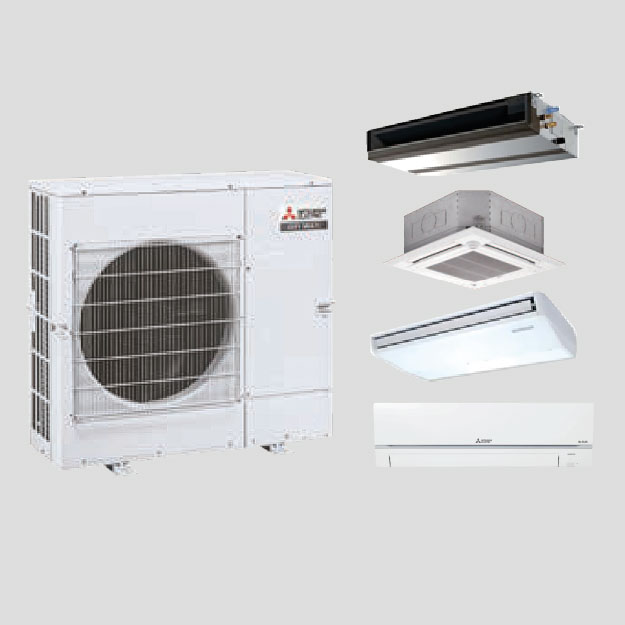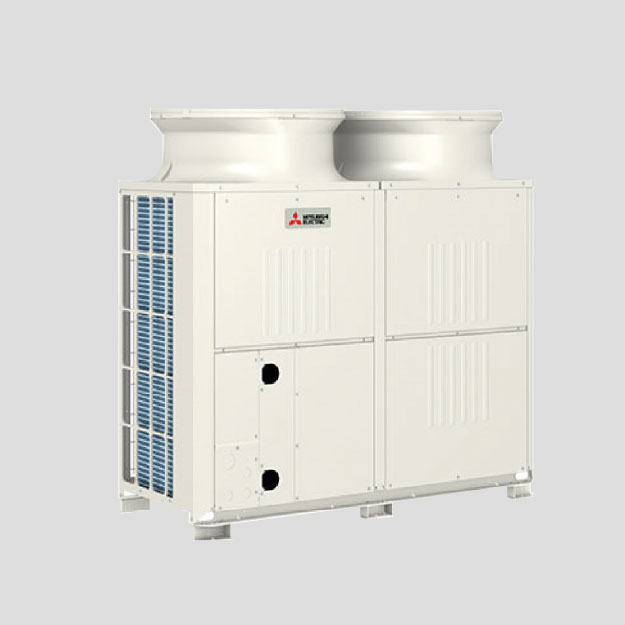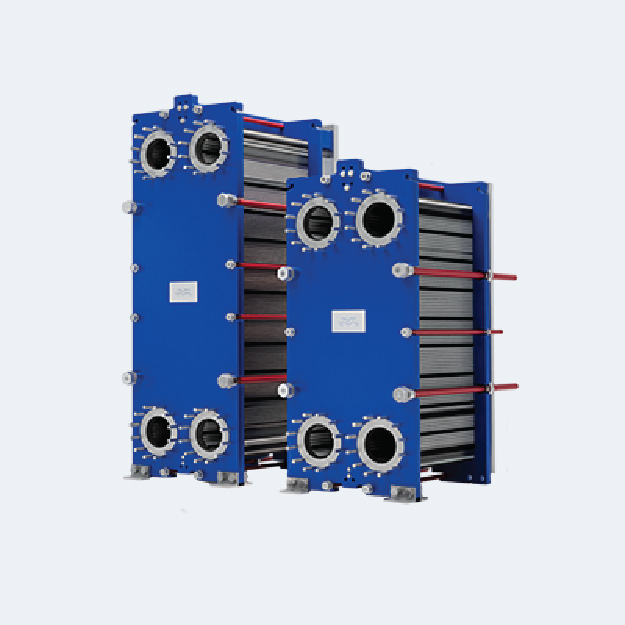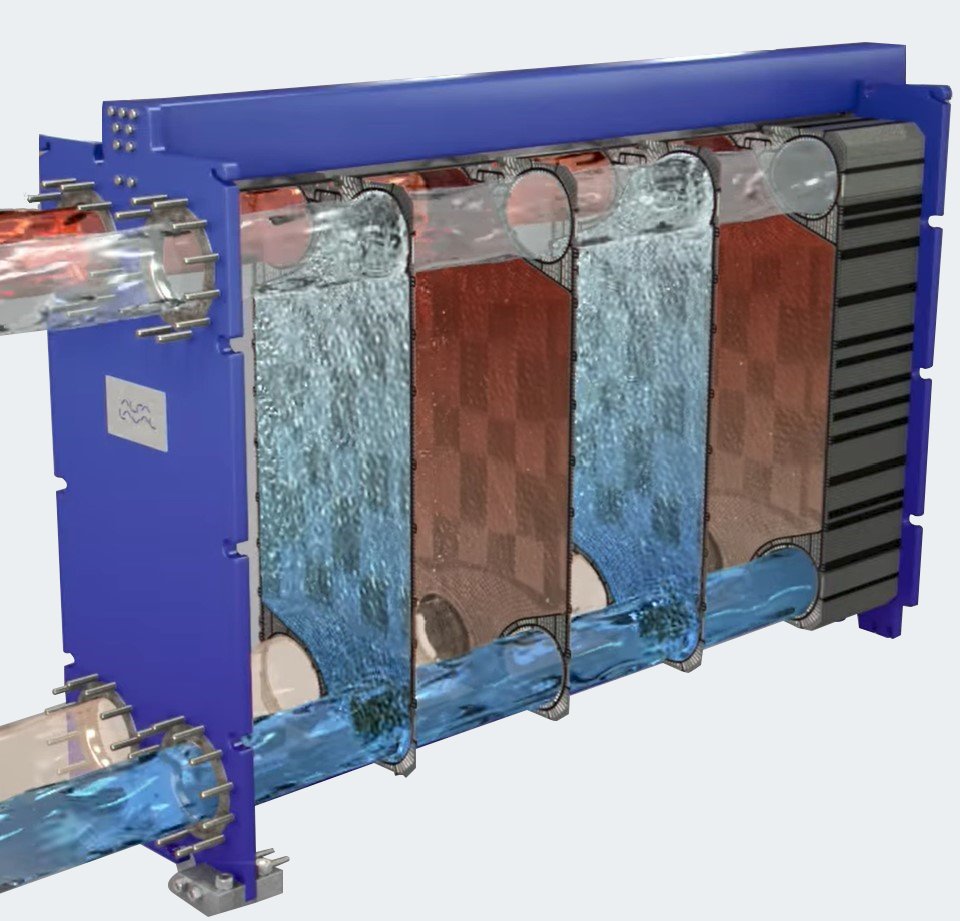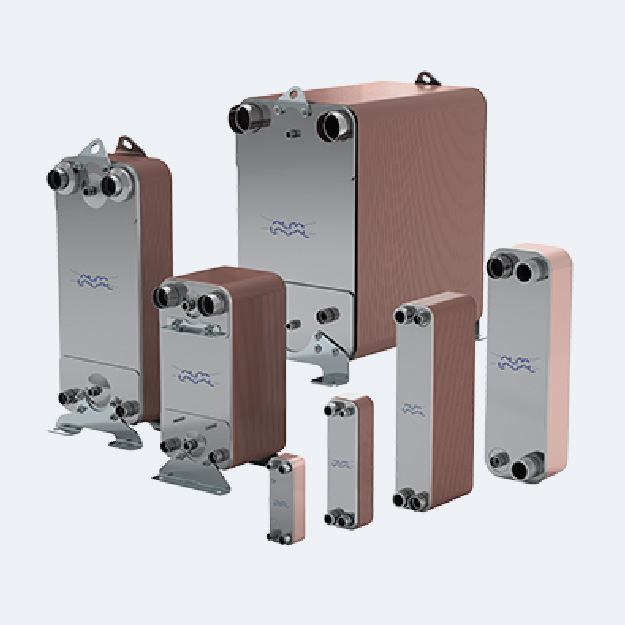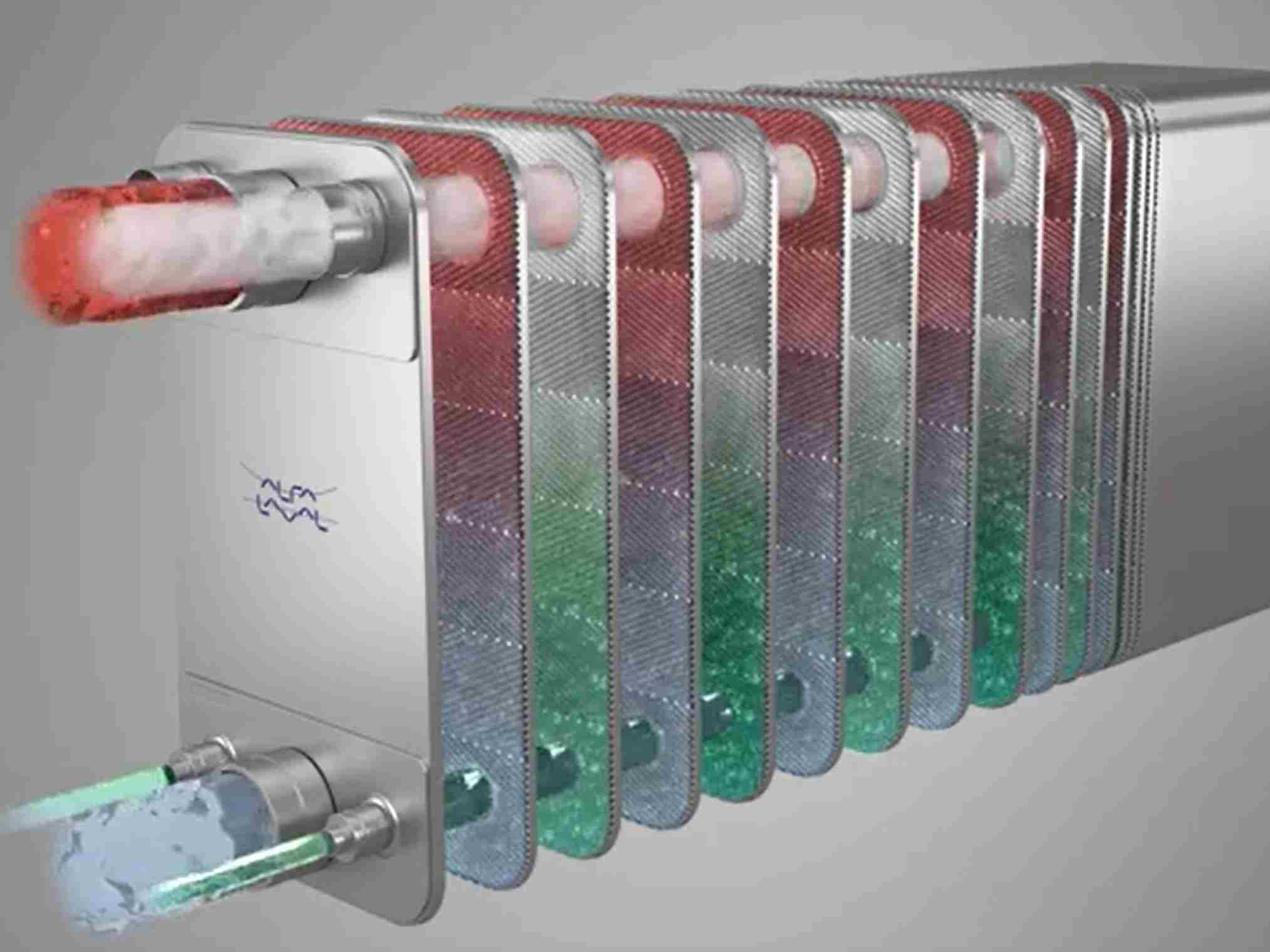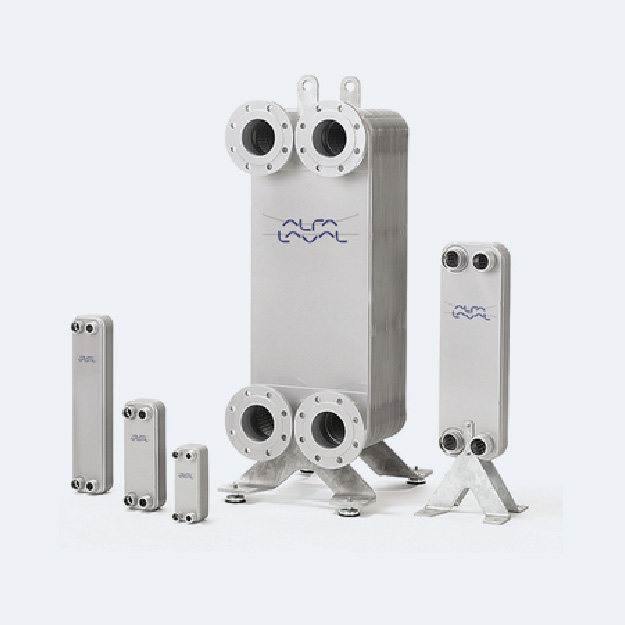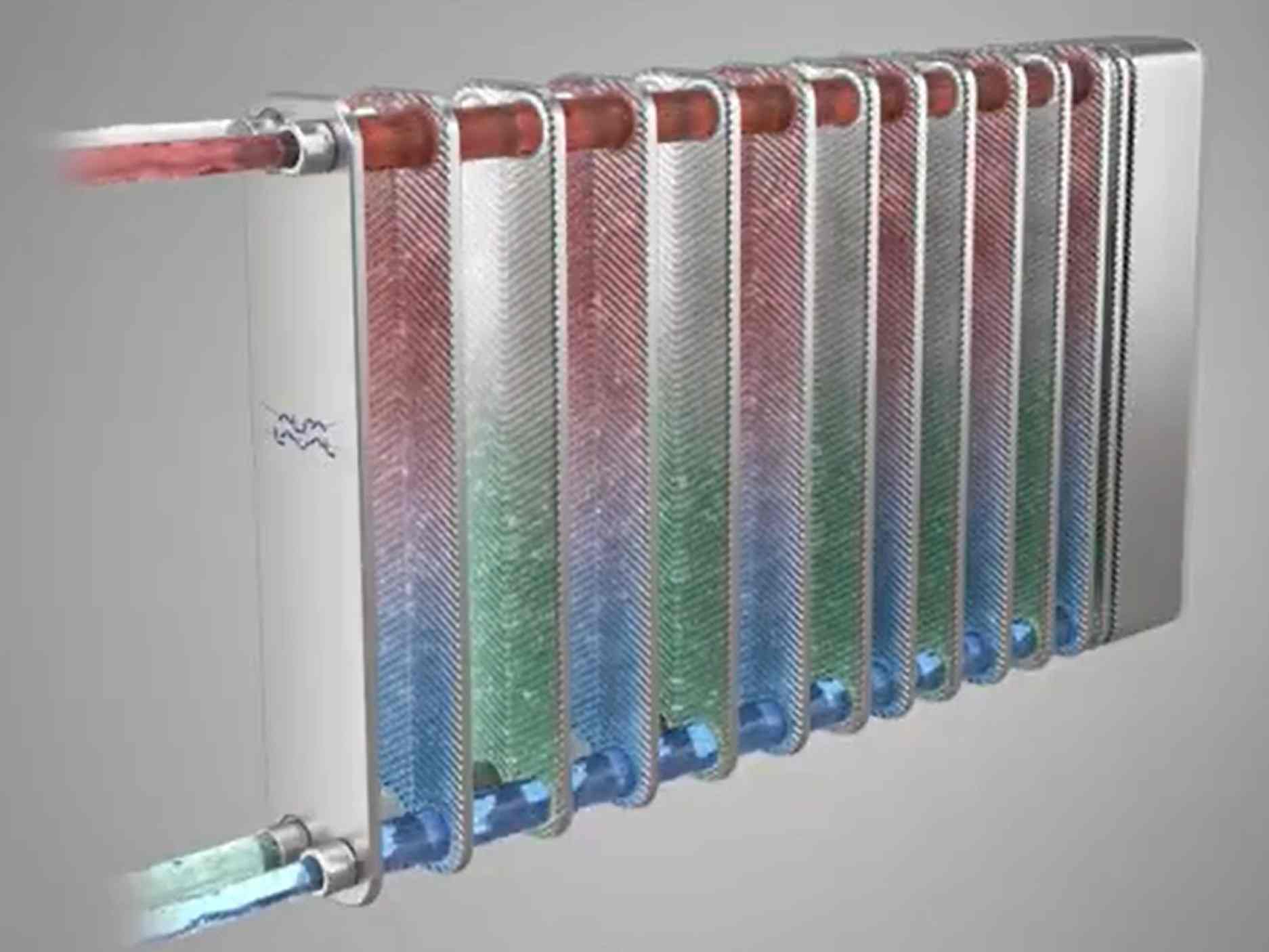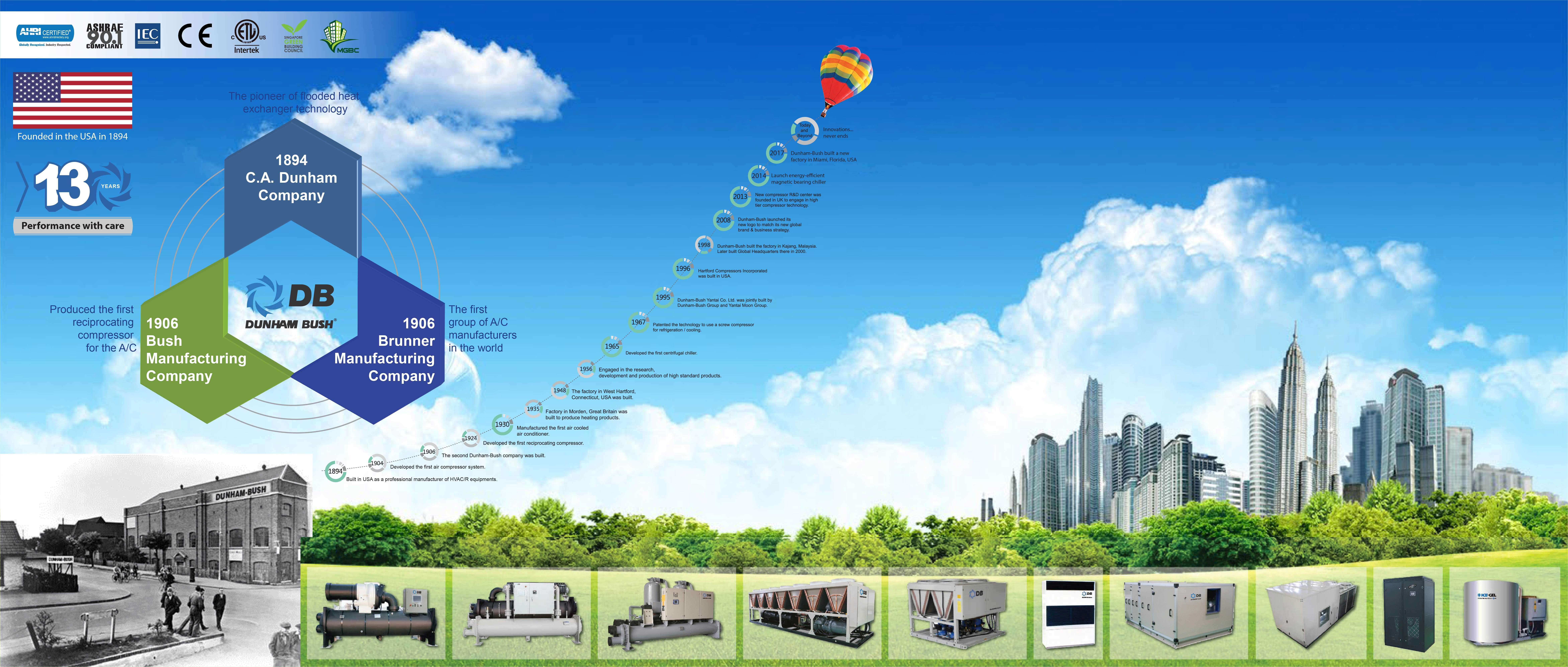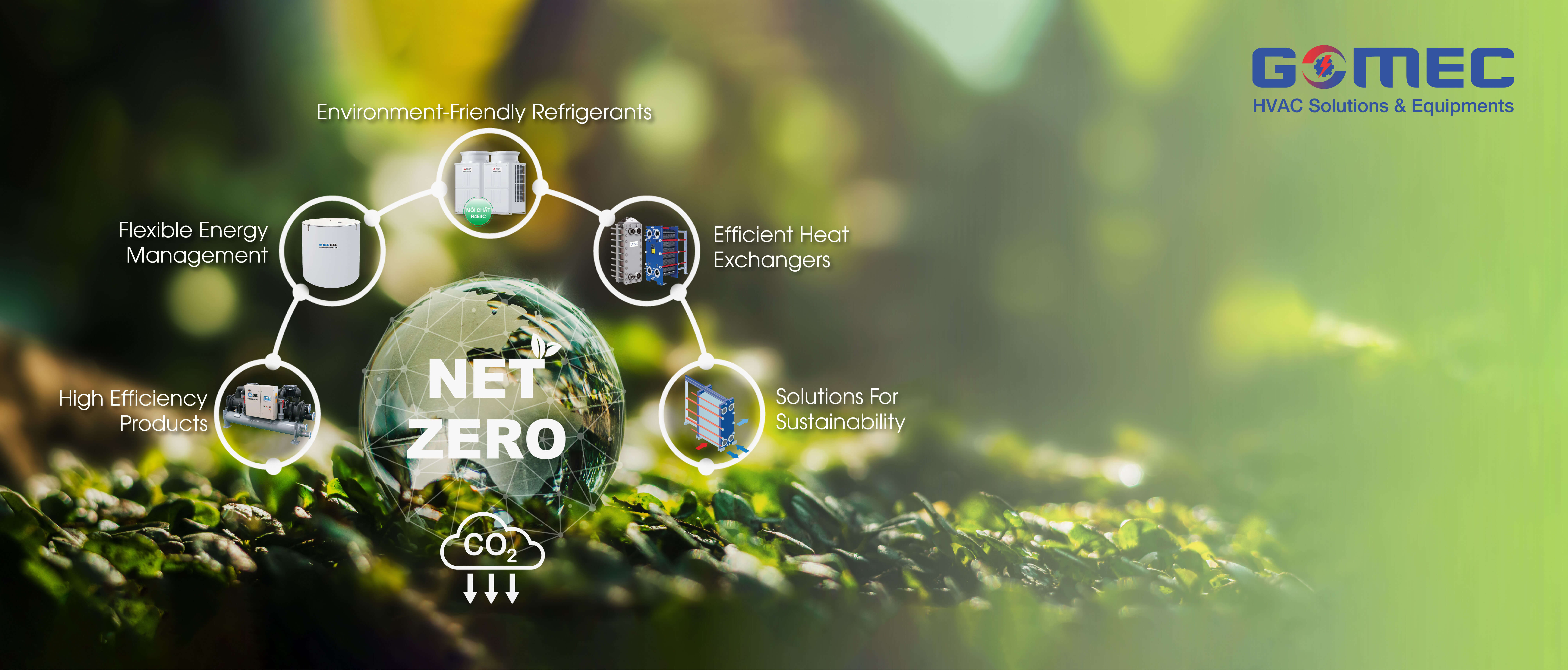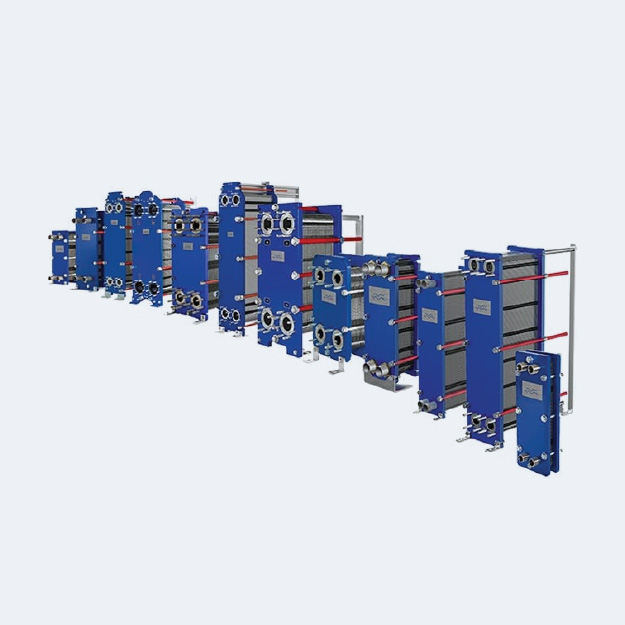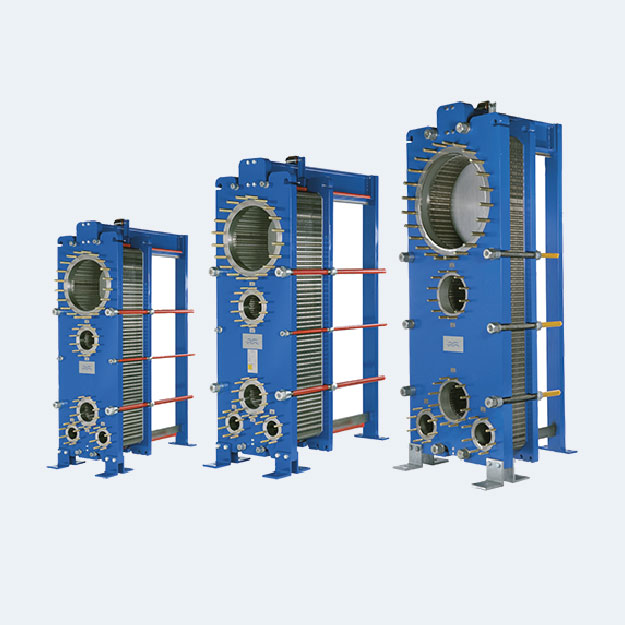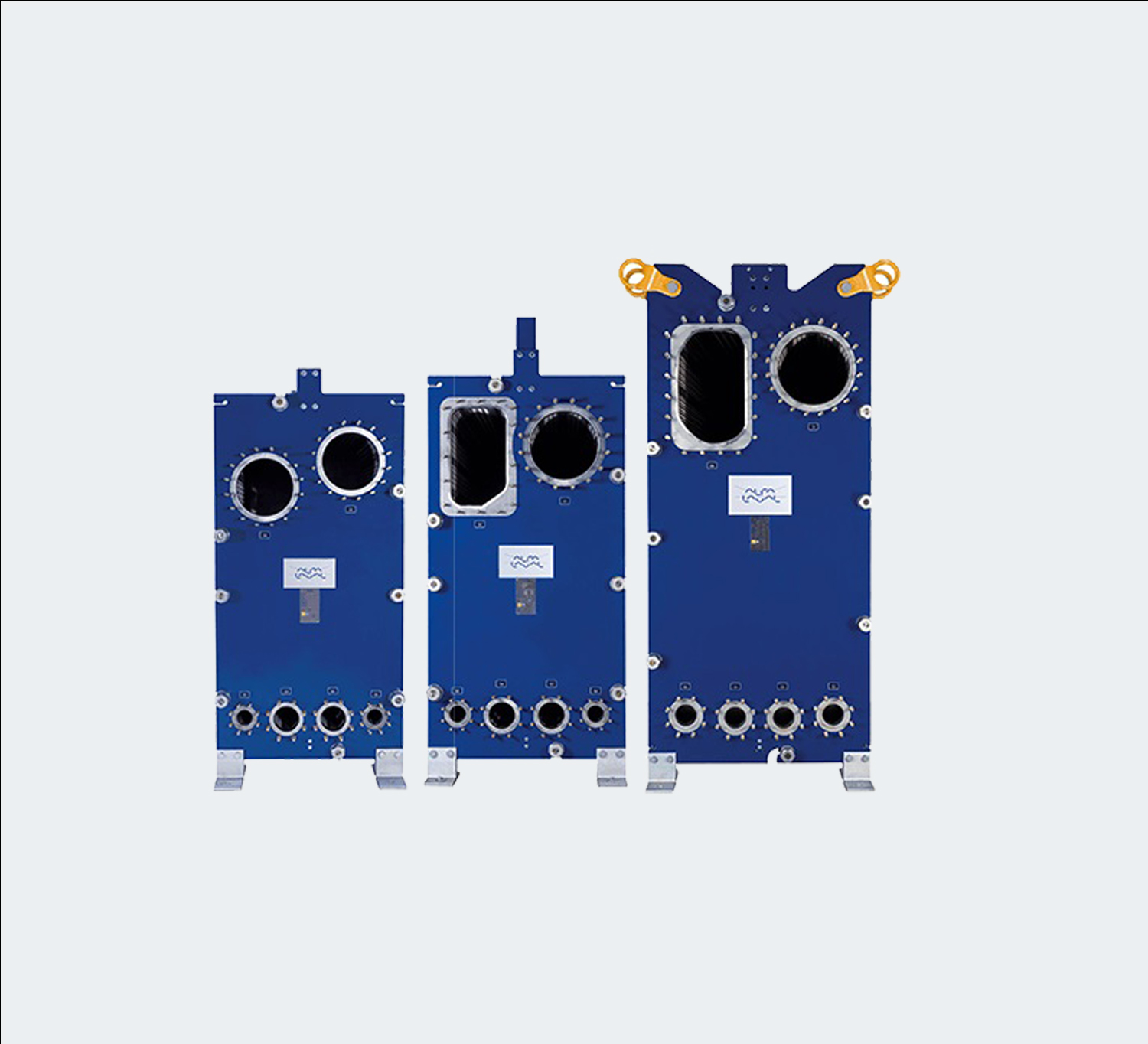
GPHE introduction
Contents/ Mục Lục
- 1. Construction and working principle of a gasketed plate heat exchanger (GPHE)
- 2. Reasons to buy gasketed plate heat exchangers from the market leader
- 3. Plate and gasket technology
- 4. Features that set new standards
- 5. Types of gasketed plate heat exchangers
- 6. Gasketed plate heat exchangers (GPHE) products
- Industrial Line
- Industrial Semi-Welded Line
- WideGap
- Diabon
- AlfaQ
- AlfaCond
- AlfaVap
1. Construction and working principle of a gasketed plate heat exchanger (GPHE)
Construction of GPHE

Construction animation of GPHE
The concept behind a heat exchanger is relatively simple – heating or cooling one medium by transferring heat between it and another one.
In a gasketed plate heat exchanger, the plates are fitted with elastomeric gaskets which seal the channels and direct the media into alternate channels. The plate pack is assembled between a frame plate and a pressure plate, and compressed by tightening bolts fitted between these plates. The channel plates and the pressure plate are suspended from an upper carrying bar and fixed in position by a lower guiding bar, both of which are fixed to the support column. The design allows easy cleaning and simple capacity modification (by removing or adding plates).
The heat transfer area of a gasketed plate heat exchanger consists of a series of corrugated plates, assembled between a frame and pressure plates to retain pressure. Gaskets act as seals between the plates. Fluids normally run counter-currently through the heat exchanger. This gives the most efficient thermal performance and enables a very close temperature approach, ie the temperature difference between the exiting process medium and the entering service medium.
For heat sensitive or viscous media, co-current flow can be used to let the coldest fluid meet the hottest when entering the heat exchanger. This minimizes the risk of the media overheating or freezing.
Plates are available with various pressing depths, angles of chevron pattern and various corrugation shapes, all carefully designed and selected to achieve optimal performance. Depending on the application, each product range has its own specific plate features.
The distribution area ensures fluids are evenly distributed across the entire heat transfer surface and help avoid stagnant zones that may cause fouling.
While high flow turbulence between plates results in higher heat transfer, the consequence is pressure drop. Our thermal design engineers can help you design and select the model and configuration that is suitable for your application so that it delivers maximum thermal performance with minimum pressure drop.
Liquid to Liquid
Steam Heater
Multi-Pass Designs
2. Reasons to buy gasketed plate heat exchangers from the market leader
Alfa Laval’s gasketed plate heat exchangers are designed to meet the highest expectations when it comes to energy effciency, compactness and reliable performance.
High energy effciency
With innovative plate design, we provide superior flow distribution across the entire plate surface. This results in excellent heat transfer and high energy effciency thanks to the limination of stagnant zones and reduced risk of fouling.
Compact size
The compact design of our gasketed plate heat exchangers makes it easy to fit compact spaces. They come equipped with all features needed for easy installation and quick start-up.
Reliable performance over time
Depending on fluid types, pressures and temperatures, Alfa Laval gasketed plate heat exchangers are tailored to meet highest expectations on performance and lifetime. Alfa Laval gasketed plate heat exchangers are also available as AHRI performance certifed versions called Alfa Laval AQ-series. The performance certifcation is according to AHRI Standard 400 and is verifed in the AHRI Liquid to Liquid Heat Exchanger certifcation program, LLHE.
Easy and safe maintenance
Our gaskets and plate pack alignment design provides easy and cost effective maintenance. The frame is equipped with features that support the unit and secure safe opening and closing during service.
3. Plate and gasket technology
The design of the corrugated plates optimizes heat transfer by providing a large but compact total surface area through which the heat can be drawn from one liquid or gas to another. The heat transfer area of the plates is pressed in a corrugated herringbone pattern.
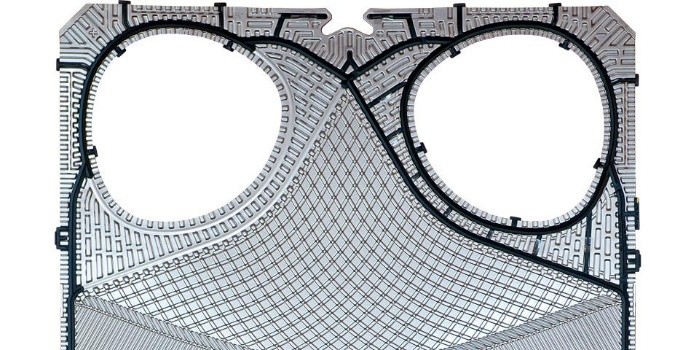
When two plates are superimposed with opposing herringbone patterns, the helix-like flow and high turbulence results in high transfer coefficients and effective self-cleaning.
A change in the corrugation pattern enables the heat exchanger to be used in different processes, even those with very dirty media.
Distribution area
The plate distribution area ensures an even flow of fluid over the entire plate to maximize the heat transfer capability. An optimized flow distribution also reduces fouling and uneven temperature zones keeping the performance levels high over time without unnecessary energy losses, maintenance costs or unplanned stops.
Gaskets are key components in heat exchanger performance. We design the gasket and plate as one to assure an optimized seal. Each is tailored to the duty of the heat exchanger. The correct profile, width, thickness, and polymer type and compound make a world of difference in avoiding the risk of premature leakage or gasket or plate damage. Your benefits are prolonged gasket life, less downtime and lower maintenance costs.
Gasket profile
Gasket glue
Special plate types
Double-wall gasketed plate heat exchangers
Designed for use with fluids that cannot be allowed to mix. Prevents leaking fluid coming into contact with the fluid in the other circuit.

Semi-welded plates
Enable aggressive and difficult fluids to be handled, and also extend the pressure range.

Wide-gap plates
Ideal for fluids containing fibers or coarse particles. Designed to eliminate bridging of solids in the entrance area.
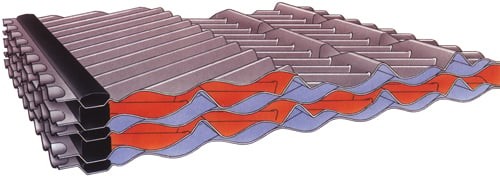
Diabon™ graphite non-metallic plates
A composite of fused graphite and fluoroplastic provides excellent resistance to corrosive materials.
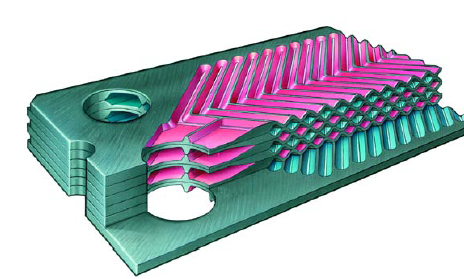
4. Features that set new standards
Features that improve heat transfer efficiency
Improving the efficiency of the heat exchanger makes it possible to simultaneously maximize production while minimizing energy consumption. It’s about reducing both your power bill and your environmental footprint.
That is why we have sought to boost thermal transfer with a revolutionary new plate design. A number of unique Alfa Laval features improve the flow of media across the plate and increase the overall heat transfer area. As a result, fewer plates are needed, meaning added performance and higher sustainability from an even more compact unit.
The CurveFlow™ distribution area optimizes the flow of media for better utilization of the whole plate surface. Improving the flow with more even distribution eliminates dead spots, providing higher thermal efficiency with reduced risk of fouling. This in turn means energy savings, lower maintenance costs and less time worrying about unplanned stops.
The OmegaPort™ noncircular inlet and outlet offers two ways to save on energy: both higher thermal efficiency and reduced pump costs. That’s because it enhances the flow of media to give increased throughput, lower pressure drop and optimal utilization of the plate surface.
The FlexFlow™ plate design improves thermal efficiency and optimizes pressure drop utilization. The asymmetric channels eliminate the compromise between thermal efficiency and pressure drop for duties with different hydraulic loads on the two sides of the heat exchanger. The result is up to 30% higher efficiency along with reduced fouling, for long-term, cost-effective performance.
The next generation of gasketed plate heat exchangers is designed with a gasket groove in a special zig-zag pattern that offers the greatest possible heat transfer area. Better utilization of the whole plate reduces the number of plates required for optimal performance and ensures maximum thermal efficiency for still greater energy savings.
Features that enhance robustness and increase reliability
Regardless of the industry or application, it goes without saying that you need a heat exchanger that is dependable. A broken or malfunctioning unit can waste time, hurt productivity and compromise safety – which ultimately cuts into your bottom line.
That is why we have aimed to increase the reliability of our gasketed plate heat exchangers in all aspects. We focus on durable designs based on robust materials and safe manufacturing processes. And in combination with advanced and innovative product features, you can be totally confident in your unit’s operation.
The PowerArc™ plate pattern divider is a feature in the bigger plates of Alfa Laval’s next-generation heat exchangers. This design ensures a more rigid plate, preventing plate elongation and securing perfect alignment. As a result, the risk for leaks or damage to the plate is significantly reduced, meaning you can expect longer operation from every plate in the pack. Additionally, the increased rigidity makes handling plates during maintenance a safer and easier process.
Alfa Laval’s unique five-point alignment system ensures perfect plate alignment when closing the unit, while simultaneously making it quick and easy to remove plates during maintenance. Excellent plate positioning secures reliable mechanical performance and helps extend the life of your equipment.
The SteerLock™ plate alignment ensures reliable plate positioning and easy service. It also secures the plate pack when exposed to pressure and temperature during operation. If the unit is disassembled for maintenance, the smart design simplifies the picking of plates when they are about to be hung back.
The RefTight™ sealing system enables enhanced, long-term performance in applications with high pressures and temperatures. The weld is positioned outside the separate ring gasket groove, ensuring reliable sealing as well as extended gasket lifetime and prolonged service intervals.
Features for simpler serviceability
The gasketed plate heat exchanger is built for many years of safe operation. One of the ideas behind a plate-and-frame design with gaskets is that it allows for a heat exchanger that is simple to open and close. This is important for inspection and service as well as for adapting the unit to new process conditions.
But as too many have discovered first-hand, sometimes opening and retightening the unit is anything but ‘simple’. With the next-generation gasketed plate heat exchangers, we have worked to make the opening and closing of a unit even easier.
And that’s just the start. New features make maintenance routines like regasketing and handling of the plates safer and easier than before. The combined result is service that goes faster – keeping the time the unit is out of production to a minimum.
ClipGrip™ gaskets offers superior fastening to the plate. Not only do the next-generation gaskets stay in place better than before, but they are also easier to mount in the first place. The unique design prevents snaking of plates at closing and the tangling of new gasket sets. Maintenance of the heat exchanger goes faster, plates and gaskets last longer, and you save money as a result.
In the next-generation plate heat exchanger, Alfa Laval has replaced the traditional roller function built on top of the carrying bar with a T-bar roller. The pressure plate roller is mounted under the carrying bar, decreasing the height of the heat exchanger and making maintenance simpler and more cost-effective. This design also protects the roller from falling dust and debris, which prevents jamming, minimizes the potential for damage to the frame and ensures easy opening and closing of the unit when required.
The Compact frame feature offers more capacity in a smaller footprint. The smart guiding bar enables a maximum number of plates or cassettes in the frame while keeping the service area requirements down to a minimum. The design enables a faster and safer service which minimizes downtime and reduces maintenance costs.
Alfa Laval’s large and medium model gasketed plate heat exchangers employ tightening bolts with bearing boxes to reduce friction when opening and retightening the unit. This makes it possible for one person to easily and safely service the heat exchanger without the need for special tools. The bearing box thus offers significant advantages over competing solutions designed with a simple nut and washer, where maintenance is laborious, time-consuming and potentially hazardous.
5. Types of gasketed plate heat exchangers
For standard duties – heating, cooling, heat recovery, evaporation and condensation
Industrial gasketed plate heat exchanger’s versatility allows it to be designed and configured for applications ranging from relatively simple duties with low requirements to very demanding duties with the highest requirements on both performance and documentation. The models are used for heating, cooling, heat recovery, condensation, and evaporation.
Typical applications:
- HVAC
- Refrigeration
- Engine cooling
- Dairy and food
- Chemical processing
- Oil production
- Power generation
- …and more
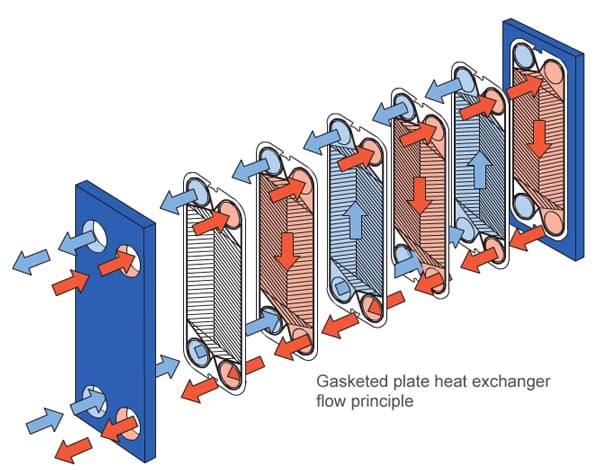
>> Learn more about Industrial gasketed plate heat exchangers
AHRI certified for HVAC applications
The AlfaQ range is certified according to the AHRI Liquid to Liquid Heat Exchangers (LLHE) Certification Program which ensures thermal performance according to manufacturers’ published specifications in the HVAC market.
Typical HVAC applications:
- District cooling substations
- Ice storage systems
- Data centers
- Free cooling systems

>> Learn more about AlfaQ AHRI certified gasketed plate heat exchangers
For refrigeration with aggressive media
Use Semi-welded gasketed plate heat exchangers as evaporators and condensers for refrigerations systems, when gaskets are not suitable for one of the process media. Semi-welded heat exchangers alternate welded channels and traditional gasketed channels and can also take a higher design pressure compared to fully gasketed plate heat exchangers.
Typical applications:
- Dairy, brewery and vineyard production
- Marine
- Fishing vessels and fish processing
- Slaughterhouses
- Chemical and pharmaceutical industries
- Ice manufacturing, ice-skating rinks
- Cold and frozen storage
- Food retail outlets
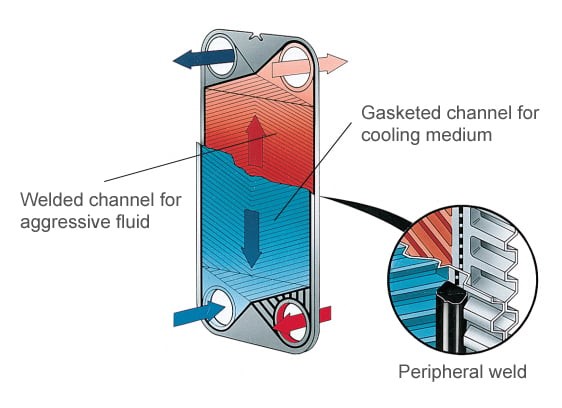
> Learn more about Industrial semi-welded GPHEs
When you have fluids with particles
WideGap gasketed plate heat exchangers are designed for fibrous fluids and for fluids containing coarse particles. The wide gaps between plates allow fibers and particles to easily pass through the heat exchanger with minimum clogging.
Typical applications:
- Sugar
- Bioethanol
- Pulp and paper
- Petrochemicals
- Condensers for heat recovery

>> Learn more about WideGap gasketed plate heat exchangers
Evaporators – when concentration and viscosity of media are high
AlfaVap semi-welded heat exchangers are rising film plate evaporators and are suitable when concentration and viscosity of media are high.
AlfaVap’s advantage is they work also when the temperature differential between the hot and cold fluids approaches as low as 4.5°F meaning that lower grade steam and more effects in series can be use in an evaporation system compared to the shell-and-tube systems.
Typical applications:
- Sugar refinery evaporation systems
- Sweeteners evaporation systems
- Bioethanol and caustic evaporation
- Thermosiphon reboiler

>> Learn more about AlfaVap plate evaporators
Condensing of vapor under vacuum
AlfaCond plate condensers are specifically designed for condensing of vapor under vacuum. They’re an alternative to direct condensers when condensate recovery is the goal and when there are space constraints. Non-condensables are removed from the condensate outlet pipe and led to the vacuum system.
Typical applications:
- Evaporation systems
- Ethanol condensers in bioethanol plants
- Pan vapor condensers in sugar refineries
- Turbine condensers in small power plants
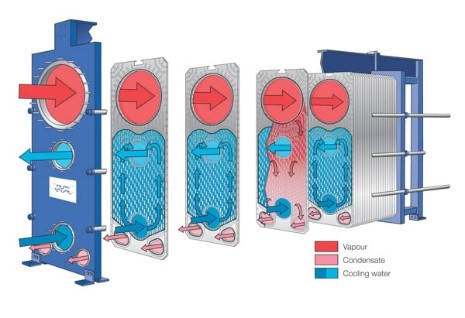
>> Learn more about AlfaCond plate condensers
For highly corrosive media
Diabon plate-and-frame heat exchangers are used for highly corrosive media, combining high-efficiency heat transfer benefits with the exceptional corrosion resistance of graphite material.
Diabon is a dense, synthetic resin-impregnated high quality graphite with a fine and evenly distributed pore structure, and can be used with corrosive media up to 390°F.
Ideal for handling highly corrosive fluids such as:
- Hydrochloric acid and gas in all concentrations
- Sulphuric acid up to 90%
- Hydrofluoric acid up to 60%
- All concentrations of phosphoric acid
- Pickling acids in surface treatment plants
- Electrolytes used in the mining industry
- Mixed acids
- chlorinated hydrocarbons
- catalysts such as aluminium chloride

>> Learn more about Diabon plate heat exchangers
6. Gasketed plate heat exchangers (GPHE) products
Reference:
- Find out more about the Alfa Laval brazed plate heat exchangers (BHE)
- Find out more about the Alfa Laval fusion-bonded plate heat exchangers (FHE)
- AHRI Performance Certification – Why Is It Necessary?
- project@gomec.vn
- Hotline & Zalo 0379 586 886
- (+84) 024 3200 8920
- Gomec Vietnam
- Gomec Vietnam

